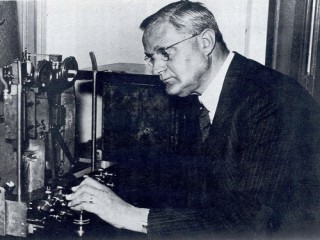
Felix Andries Vening Meinesz biography
Date of birth : 1887-07-30
Date of death : 1966-08-12
Birthplace : Scheveningen, The Hague
Nationality : Dutch
Category : Arhitecture and Engineering
Last modified : 2011-05-01
Credited as : Geodesist - engineer, and Geophysicist , Geodetic Commission of the Netherlands
The Dutch geodesist and geophysicist Felix Andries Vening Meinesz pioneered in the field of gravity measurements.
On July 30, 1887, F. A. Vening Meinesz was born in Scheveningen. He attended the public schools in Amsterdam, the city in which his father was the burgemeester, and in 1910 obtained his diploma in civil engineering from the Technical University in Delft. He was first employed with the Geodetic Commission of the Netherlands, his task being to continue the gravimetric survey of the country with the aid of the contemporary pendulum instruments. The unstable soil of the Netherlands proved a serious handicap, and it was impossible to attain the desired accuracy. Vening Meinesz tried to eliminate the disturbing movements of the soil by using two pendulums swinging from the same support. His experiments, combined with a mathematical analysis of the sway of the entire system, proved very successful. Further experiments, carried out aboard submarines, resulted in the construction of the improved Vening Meinesz pendulum apparatus, which, for the first time in the history of geodesy, made possible the precise measurements of gravity on the oceans.
During the years 1923-1939 Vening Meinesz made 11 long journeys in submarines with his apparatus, cruising all oceans and especially in the East Indian Archipelago. At the same time, he expanded the mathematical theory which was used to convert the physical information about the gravity field to geometric information about the shape of the earth. In this way, the solution of the fundamental problem of scientific geodesy, that is, the mapping of the entire earth in one comprehensive system, was made possible both theoretically and practically. Only the use of artificial satellites can rival, to some extent, the gravimetric method initiated by the efforts of Vening Meinesz.
Meanwhile, Vening Meinesz's scientific interest was directed into deeper things. From his gravity maps of East India he found a long narrow strip of negative anomalies which he interpreted to be the first visible sign of a future mountain range. His investigations of this dealt with the internal structure and currents of the earth, the isostatic compensation of topographic formations, and the upheaval of the mountain ranges. Other, later discoveries in the field of geophysics gave plenty of support to his theories.
Vening Meinesz taught geodesy, cartography, and geophysics at the State University in Utrecht and at the Technical University in Delft. He was also the director of the Institute of Meteorology (1945-1951) and the president of the International Union of Geodesy and Geophysics (1948-1951). On Aug. 12, 1966, he died in Amersfoort, Netherlands.
















